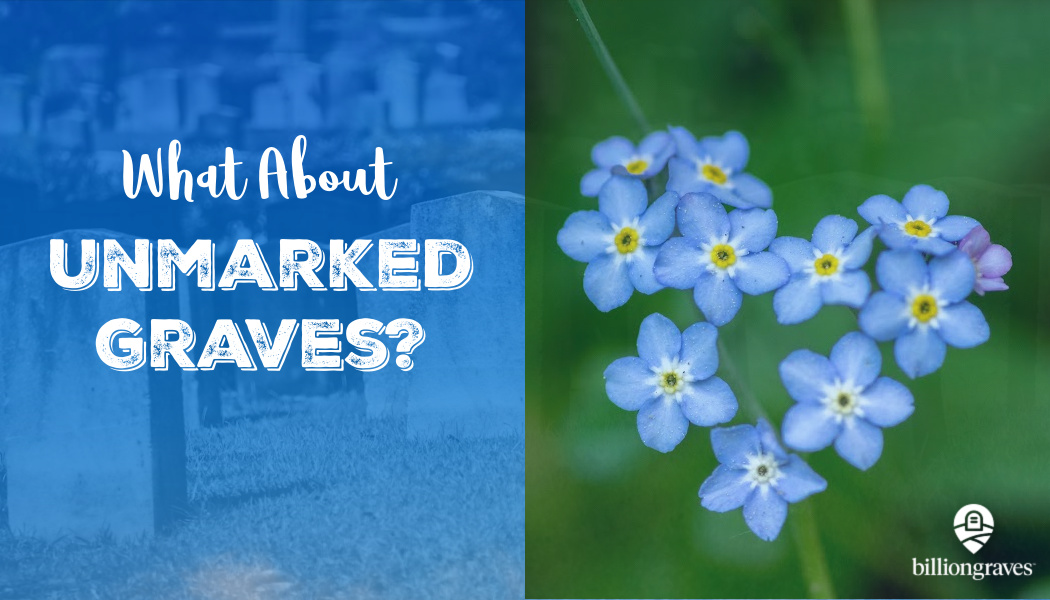Unmarked graves are burial sites without visible markers. How will those who have been buried in graves without headstones be remembered?
Thanks to the BillionGraves app, there is an easy solution!
Unmarked graves become genealogical treasures once the site has been photographed with the BillionGraves app because it automatically adds a GPS location.

Locating Your Ancestor’s Unmarked Graves
But first, you will need to find those unmarked graves! Finding your ancestor’s burial locations is an important part of growing your family tree.
Knowing the location of their final resting places gives you a place to visit so you can honor your ancestors. It also provides a foundation for future genealogical research.
The first thing you need to do is find the cemetery where they may be buried. Here are four ways you can do that:
1) Family Lore
If you have older living relatives, begin by asking them if they know where your ancestor was buried.

They may have first-hand knowledge of someone who died before the family moved to another location or who died at a time when the family could not afford to purchase a grave marker.
This can be the easiest way to find unmarked graves. But sometimes no one knows, what then?
2) Check the Death Certificate
Burial locations are often noted on death certificates. Examine them closely. You will usually find the name of the cemetery near the bottom of the page.

Sometimes the cemetery name will be abbreviated. For example, “CH” written on the corner of the certificate may stand for Circle Hill Cemetery. If there are unexplained initials like this on the certificate, check with the local county offices, libraries, or online resources to find out the names of the cemeteries in the area to see if any of them match the initials.
3) Read the Obituary
If you know the general area where your ancestor’s family lived, check old newspaper records for your ancestor’s obituary. It will often state the time and place of the funeral, as well as the cemetery where the deceased was buried.

Many old newspaper collections are now available online.
Local libraries also often have old newspaper collections. Sometimes local historical societies will do a lookup for you if you don’t live nearby.
4) Call the Cemetery Manager
It is often fairly easy to guess where your ancestor’s graves may be. They are usually in one of the cemeteries closest to their home or on the property of the church they attended.

Some are buried on their family farms or near relatives in a neighboring town.
Call the church, county clerk, or city clerk who manages cemeteries in your ancestral hometown to see if they have records of older burials. Ask specifically about records for unmarked graves.
If the cemetery is a really old one and is no longer managed by any entity, you may still be able to get burial records by checking with the local historical society or library archives.
Found the Cemetery?
Once you have found the cemetery where your ancestor is buried, you may choose to go to the cemetery in person to search for their unmarked grave.

Check with the cemetery office to see if they have records of the burial. They will often keep track of unmarked burials.
Cemetery managers will typically be able to give you directions to the location of the grave and provide you with a map.
Sometimes there is a space between the headstones in your ancestor’s family plot. There may even be an indentation in the ground where the coffin beneath has collapsed over the years.
Take Photos of Unmarked Graves with the BillionGraves App
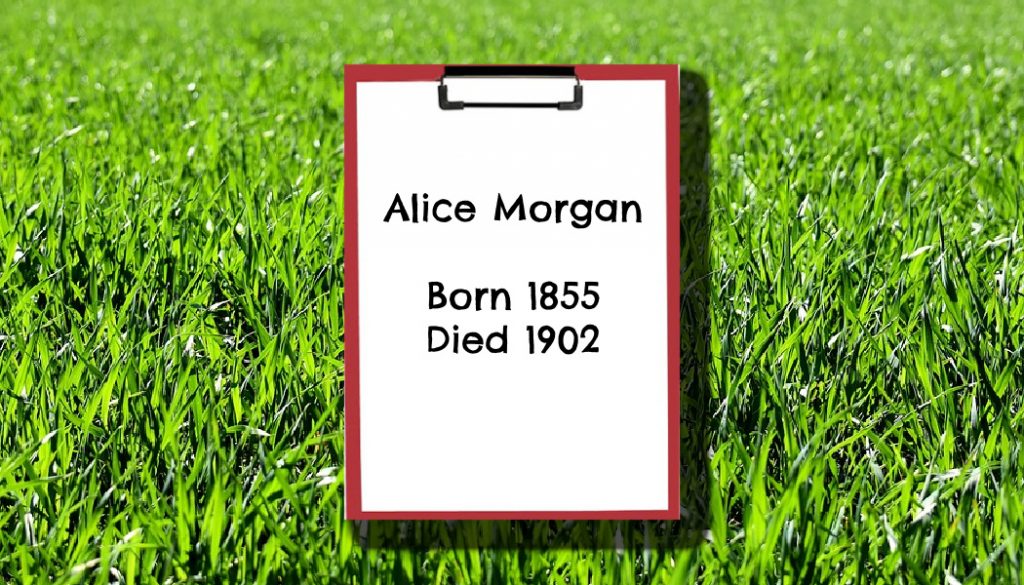
Once you know who is buried in an unmarked grave, write the information on a whiteboard or piece of paper. Then take a picture of it with the BillionGraves app.
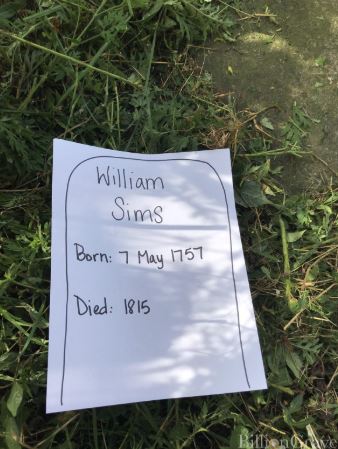
It will automatically be tagged with GPS coordinates – just as if it was a beautiful gravestone.
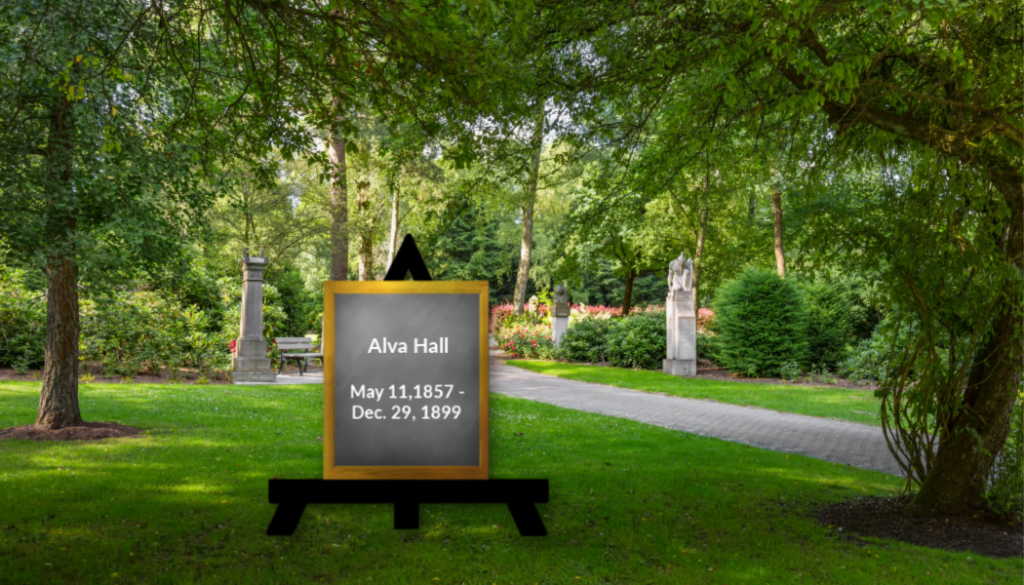
After you have taken the photo, step back and take another picture that shows the unmarked grave in relation to the surrounding headstones. This will give it locational context – in addition to the GPS-marked satellite map – to help others find it in a cemetery.
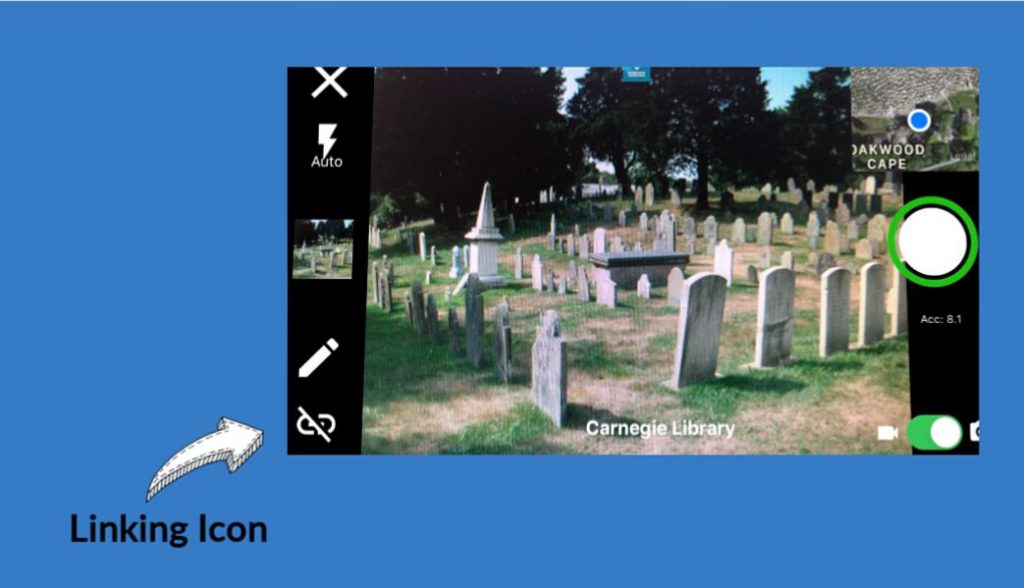
To link those two photos together, tap the chain icon in the corner of your phone screen in between taking those two pictures.
In case you have not used the BillionGraves app, here’s how:
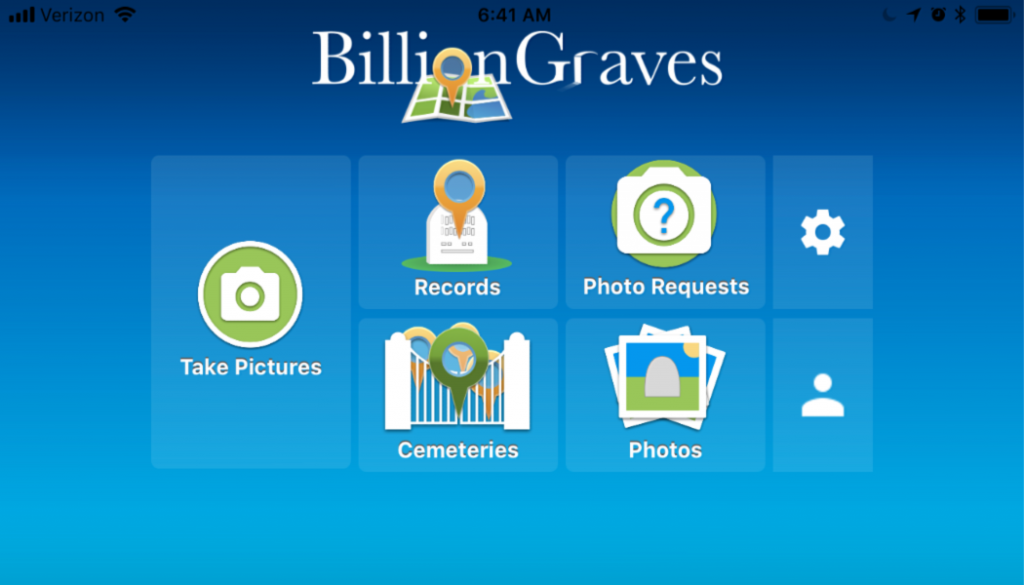
- Download the BillionGraves app to your smartphone from your app store.
- Create a free account on the app or at BillionGraves.com.
- Open the BillionGraves app as soon as you arrive at the gravesite since the GPS feature will work best if the app has about 5 minutes to connect before you begin taking photos, especially if you are taking photos in a remote area.
- If you are at a cemetery, check the bottom of your screen to see if the name of the cemetery matches your current location. If the wrong cemetery name is listed, tap on it, and then select the correct cemetery name.
- From the main screen of the app, tap on “take pictures“.
- Tap the white button to take a picture. The GPS location will be automatically recorded as you take a photo.
- When you are finished for the day, it is time to upload your photos. You can wait to connect to Wi-Fi if you like.
- From the main screen of the app, tap on “photos”.
- When the orange button that says “upload” appears, tap on it to submit your gravestone photos.
- You can transcribe the photos yourself, if you like, by going to BillionGraves.com/transcribe. If the names and dates are not visible on the gravestone or there is no gravestone present, please indicate your source of information in the notes section.
Why are Some Graves Left Unmarked?

There are many reasons that people are buried in unmarked graves. Here are a dozen of them:
- In past centuries, many burials were made on family homesteads – especially farmland – with only a tree or a rock to mark the spot. The family may have meant to post a proper monument later. But as families became more transient, they moved away from their homesteads, including the burial site. If they did not mention it to the next generation, the information was lost.
2. Financial limitations may prevent families from purchasing headstones.
3. Mass unmarked graves are common during times of widespread disease or war.
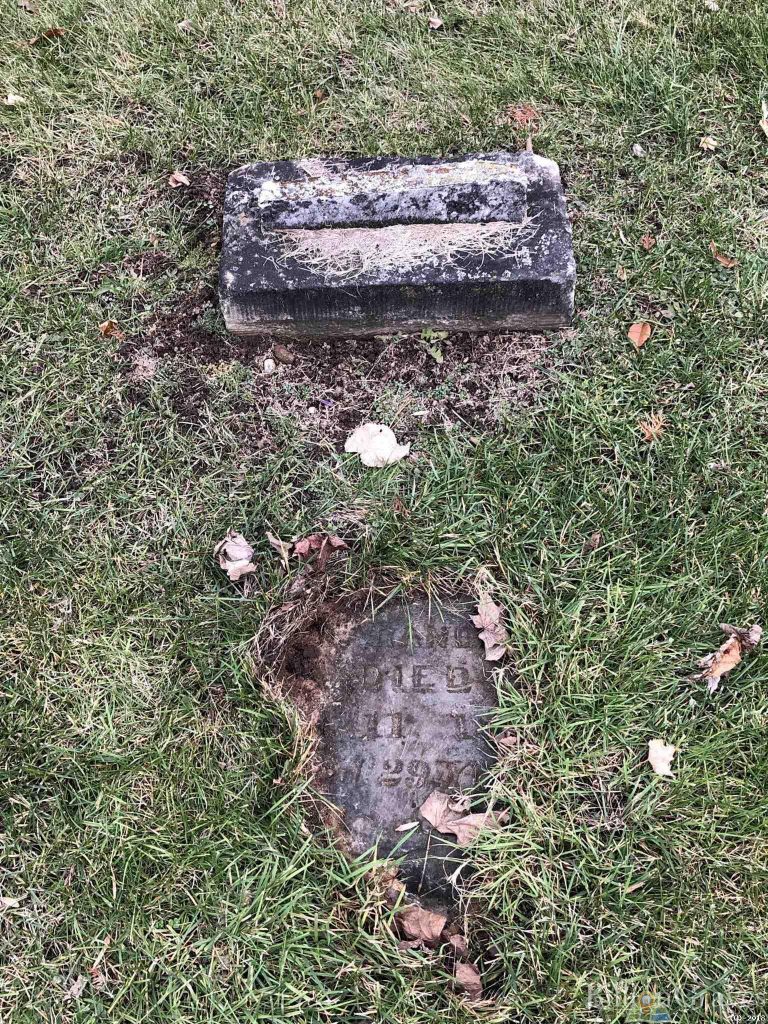
4. Sometimes older headstones have deteriorated, leaving the grave without a marker.
5. It may reflect the wishes of the deceased to have a simple burial.
6. Some families are wracked with grief and indecision during the time of mourning and intend to place a marker later.
7. Others are waiting for the spouse to die so the engraving for the couple can be done at the same time but the family members don’t get around to placing a headstone.

8. Executed criminals used to be buried in unmarked graves as a form of disgrace. Today, it is more common for them to be cremated and their ashes scattered.

9. Famous celebrities are sometimes buried with unmarked graves so the family can avoid a multitude of visitors and have privacy when they go to the cemetery.

10. Mental health hospitals often buried patients with numbers on their grave markers instead of names due to the societal stigma tied to mental illness.
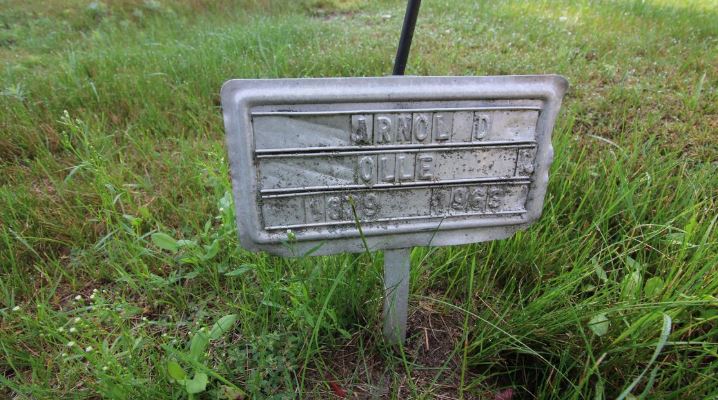
11. Temporary markers sometimes are left to become permanent markers. They are not very sturdy so they are sometimes run over by lawnmowers or the letters fall off.

12. Prior to 1950, stillborn infants were often buried without funerals, names, or gravestones to prevent the family from bonding with the child in an effort to diminish their grief. Cemeteries sometimes place one monument for all the babies collectively.
In spite of these varied situations, the deceased is often remembered generations later. Then family descendants sometimes place grave markers for their ancestors as a token of remembrance and honor. Or they may choose to memorialize them by taking a photo with the BillionGraves app.
A Remarkable Eagle Scout Project to Document Unmarked Graves
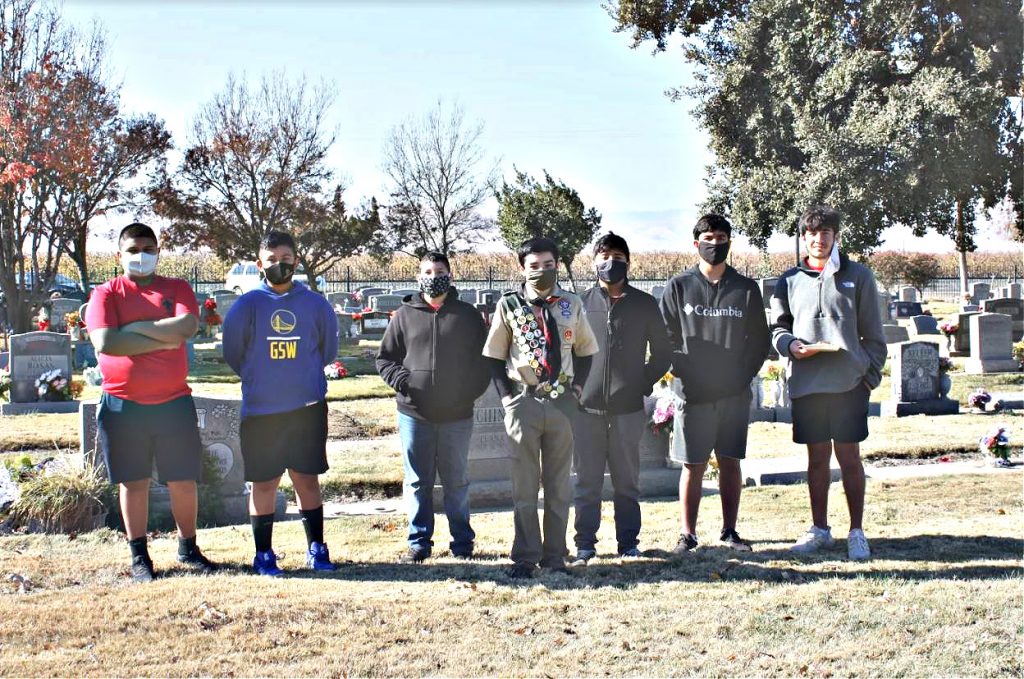
Eagle Scout candidate Diego Gallardo of Patterson, California and his group of 30 volunteers documented the entire Patterson Cemetery District which has more than 7,800 gravestones in about two hours.
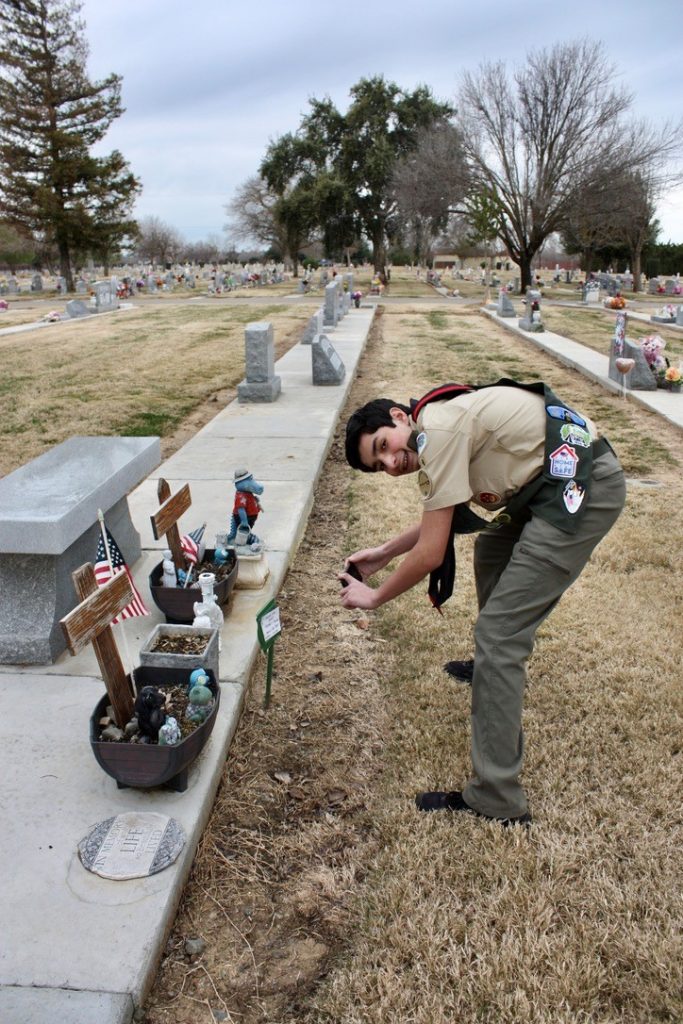
Diego’s own great-grandfather is buried there.
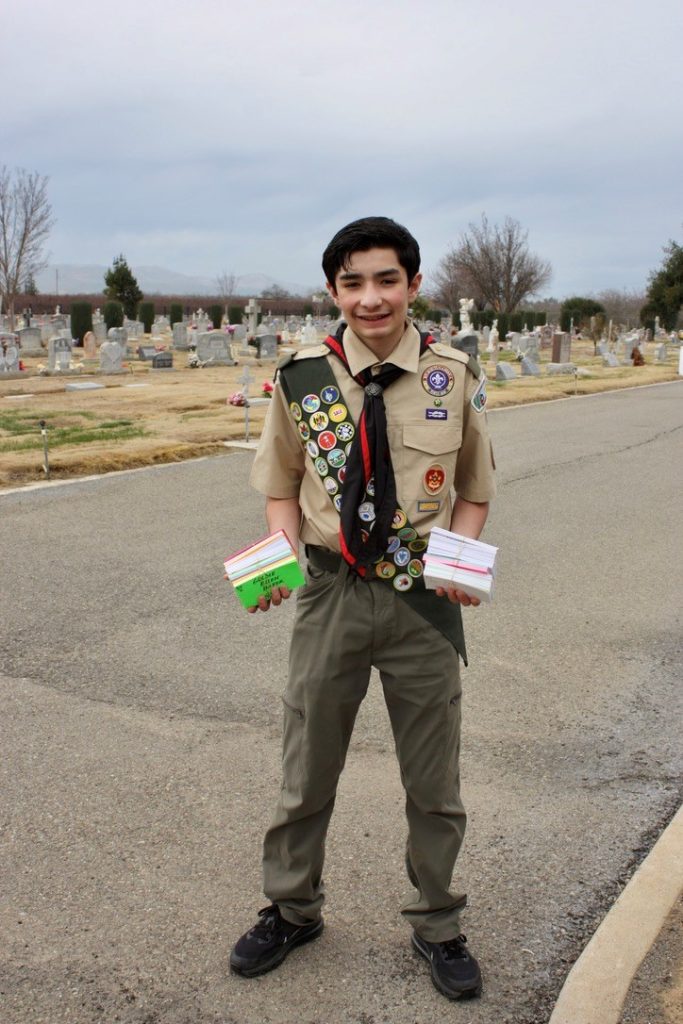
Diego enjoyed his Eagle Scout project so much that he decided to expand it by taking photos of the unmarked and worn graves.
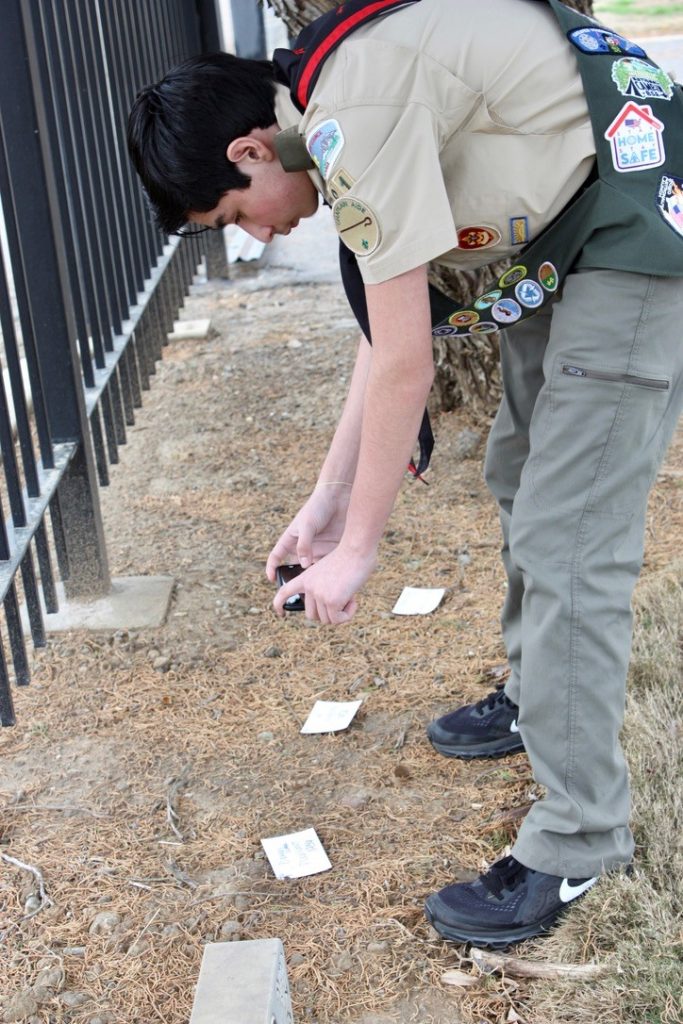
Diego said, “I am taking it one step further and helping the cemetery document the unmarked, faded, and unreadable markers. To find these graves, I am walking row-by-row again with the cemetery general manager by my side.”
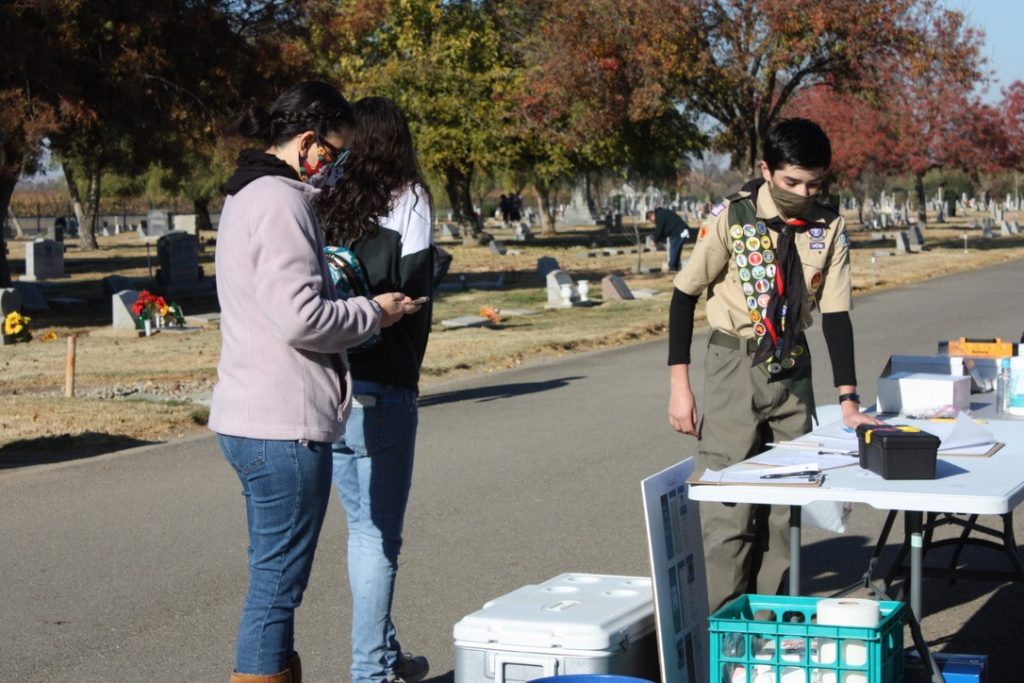
“As we walk,” he continued, “I write down the location of the worn headstones and then we look them up in their computer. I write down the names and dates on an index card, go back out to the cemetery, and retake the picture with the index card next to the gravestone.”

Diego said, “The index card will be easy to read when the picture gets transcribed. This way, everyone gets documented and no one is lost or left behind.”
To see some of the unmarked graves that Diego photographed on the BillionGraves website, click HERE and HERE.
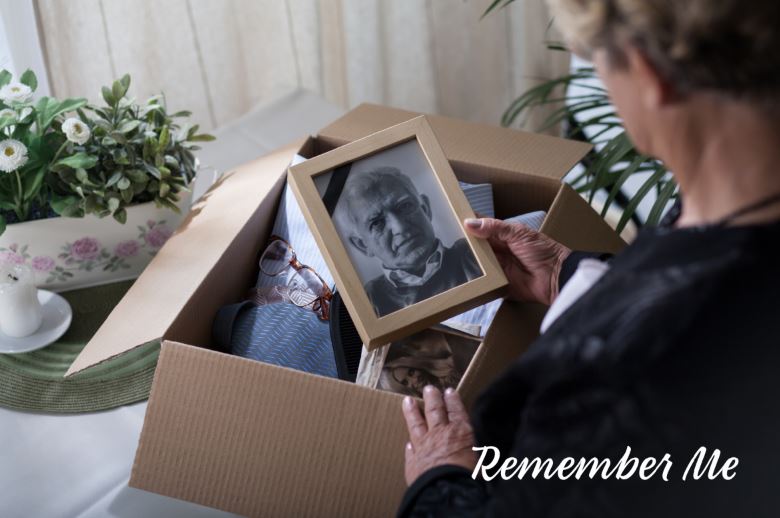
Learn more about taking photos of unmarked graves by clicking HERE.
If you are a cemetery manager who would like to have your cemetery documented, email us at Volunteer@BillionGraves.com and we’ll see what we can do to help.
If you would like to volunteer to take gravestone photos, click HERE to get started. You are welcome to do this at your own convenience, no permission from us is needed.
If you still have questions after you have clicked on the link to get started you can email us at Volunteer@BillionGraves.com.
Happy Cemetery Hopping!
Cathy Wallace

